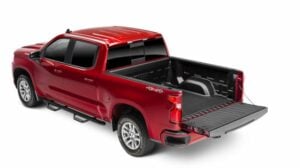When it comes to vehicle rescue operations, time is of the essence. Emergency responders must have access to efficient and reliable tools to swiftly extricate victims from car wrecks. This article explores the most commonly used rescue tools, focusing on their functions, advantages, and limitations. While tools like the ‘hydraulic ram’ and ‘jaws of life’ are well-known, there are other vital tools that play a crucial role in rescue operations.
Spreaders:
These tools are often associated with the jaws of life. They are designed to pry apart metal and other materials. Spreaders are especially useful for creating openings in vehicle doors or frames, allowing rescuers to gain access to trapped individuals. Their powerful spreading action can forcefully open even the most severely damaged vehicles.
Cutters:
Similar in function to spreaders, cutters are designed to slice through metal. They are essential in cutting away vehicle components to free trapped victims. These tools are robust and can slice through steel, making them indispensable in urgent rescue operations.
Combination tools:
These are hybrid tools that combine the functions of both spreaders and cutters. They offer versatility to rescue teams who might need to switch rapidly between spreading and cutting operations. Combination tools are particularly beneficial in situations where space and time are limited.
Hydraulic rams:
This tool is crucial for creating space in confined areas. The hydraulic ram can push apart sections of a vehicle, such as the dashboard or steering column, that have trapped a victim. Its power and precision make it an essential tool in the arsenal of rescue operations.
Air lifting bags:
These bags are used to lift heavy objects, including vehicles. They are placed under an object and inflated with air, providing the lift needed to free trapped individuals. Air lifting bags are crucial in situations where traditional lifting methods are impractical or impossible.
Stabilization equipment:
Stability is key during rescue operations. Tools like struts and shoring equipment are used to stabilize vehicles, preventing further movement and ensuring a safe working environment for rescuers and victims alike.
Glass management tools:
Breaking car windows is often necessary for quick access or ventilation. Glass management tools ensure that this is done safely, reducing the risk of injury from shattered glass.
Power saws and drills:
These tools are used for cutting through materials that spreaders and cutters can’t handle. They are particularly useful in dealing with newer vehicles that may have tougher materials not easily cut by traditional rescue tools.
Rescue path markers:
These devices help rescuers identify the safest and most effective points of entry into a vehicle. They are essential in planning the extrication process, ensuring that operations are carried out efficiently and safely.
Lighting and visibility tools:
Adequate lighting is critical in rescue operations, especially in low-light conditions. Portable lights and reflective materials ensure that rescuers can see and be seen, reducing the risk of accidents during the operation.
In conclusion, the range of tools available for car rescue operations is diverse and specialized. Each tool serves a specific purpose, and together, they form a comprehensive toolkit that can address the various challenges encountered in vehicle extrication.
The effectiveness of these tools not only depends on their design but also on the skill and experience of the rescue team. Continuous training and familiarization with these tools are essential for efficient and successful rescue operations.






